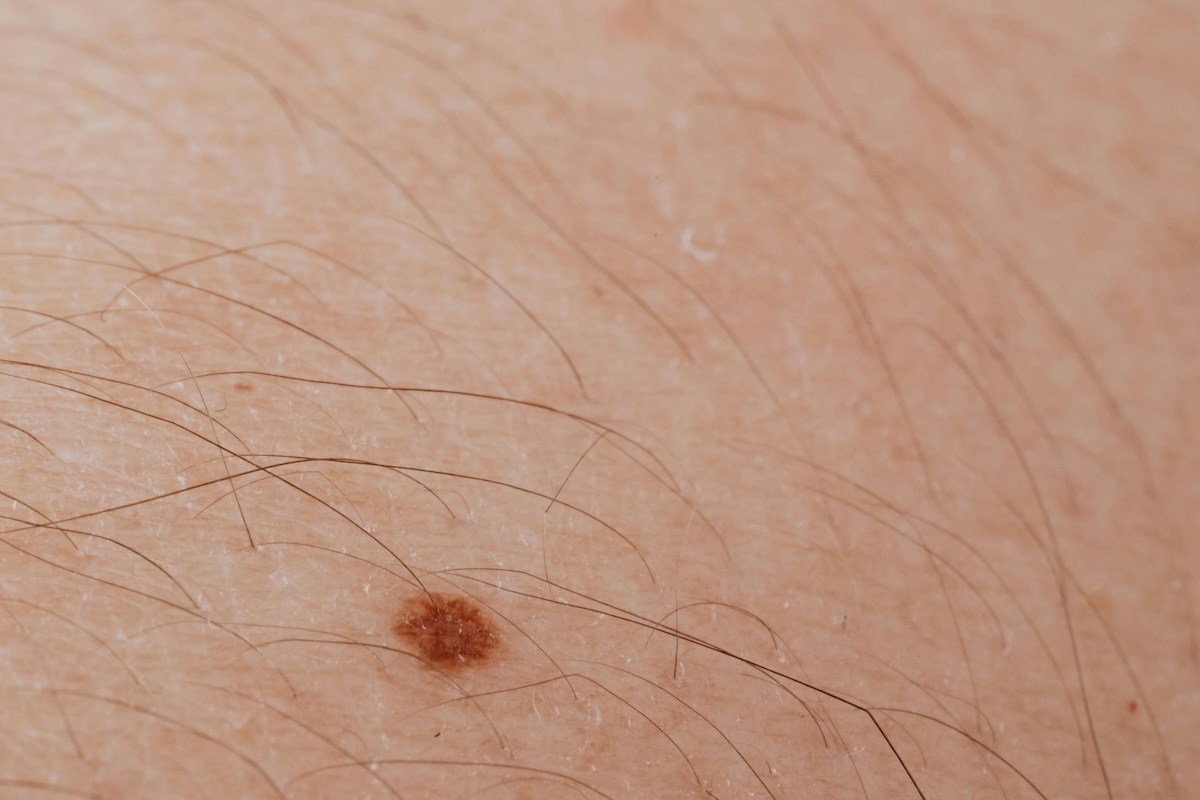Note: I’ve also written about testosterone treatment for women in perimenopause.
Some time ago, I saw the husband of one of my patients in my office for the first time. He was there because he hadn’t been feeling well for several months. He was more fatigued than usual, but he had young kids at home and didn’t get to sleep as much as he used to. He felt like he was losing muscle mass, but his workout schedule had been erratic due to work and family demands. He could explain away every symptom.
He was in the latter half of his 40s and had gained weight. But what was really bothering him was his mood. He just felt flat or a little blue. He wasn’t depressed, and he couldn’t quite put his finger on it, but he didn’t feel like himself. We discussed that low testosterone might be one cause of all his symptoms.

Here at Hot Flash we have primarily focused on women’s hormonal health. However, many of us live with men and boys. We could all benefit from a little insight into men’s hormonal health. So today we are going to consider the role of testosterone in boys and men.
What is testosterone and how does it affect men’s health?
Testosterone is the predominant sex hormone in men’s bodies. It is mainly made in the testes beginning during puberty. Similar to estrogen production and ovulation in girls and women, the hypothalamus in the brain and the pituitary gland drive testosterone production and sperm production in boys and men.
The hypothalamus secretes gonadotropin-releasing hormone, which stimulates the pituitary gland to make luteinizing hormone (LH) and follicle-stimulating hormone (FSH). LH stimulates the testosterone-producing cells in the testes to make and release testosterone. FSH promotes sperm production.
As it circulates in the blood, some testosterone is converted into estrogen — this is the main source of estrogen in men and boys. Some testosterone is converted to dihydrotestosterone (DHT). Together, testosterone, DHT, and estrogen affect the body in a number of ways.
When most people think of testosterone, they think of libido or sexual desire, sexual function — especially the ability to get and maintain an erection — and sexual satisfaction. While testosterone plays critical roles in male sexual function, it also impacts the balance of muscle and fat in the body, helps drive the maturation of sperm, and stimulates the bone marrow to produce red blood cells.
The estrogen men convert from testosterone is key to increasing bone density and closing growth plates during puberty and maintaining healthy bones throughout a man’s life.
How do testosterone levels change over time?
Boys and girls have similar levels of testosterone and estrogen before puberty. During puberty, boys’ testosterone levels rise. In the late teens and early 20s, testosterone levels reach adult levels and remain stable for several decades. Between the ages of 40 and 50, testosterone levels start to decline gradually, but men do not experience the same precipitous drop in sex hormones that women do during the menopausal transition.
Boys and men also have diurnal changes in testosterone levels — testosterone levels rise over the night and peak around 8 a.m. As men age, this diurnal pattern becomes less pronounced. Understanding the diurnal variation of testosterone is critical to interpreting testosterone levels in the blood.
What causes low testosterone?
Beyond normal aging, there are many things that can decrease testosterone levels in men. They can largely be divided into three categories: problems in the testes, problems in the pituitary gland, and over-conversion of testosterone to estrogen and DHT.
The main cause of increased conversion of testosterone to estrogen and DHT is increased body fat. Body fat is not inert. Fat cells are hormone-producing powerhouses that crank out a number of biochemicals, including aromatase — the enzyme that converts testosterone to estrogen. More fat cells produce more aromatase. More aromatase converts more testosterone to estrogen, leading to low testosterone levels.
Problems with the testes are the least common cause of low testosterone. Previous infection with the mumps used to be a common factor, but with widespread vaccination for mumps since the 1960s, this has become increasingly rare. Physical trauma, some types of chemotherapy, and pelvic radiation treatment can all cause low testosterone. Boys and men born with a chromosomal abnormality where they have two X chromosomes and one Y chromosome — known as Klinefelter syndrome — may also develop low testosterone because of testicular failure.
Changes in the pituitary can reduce the production of LH, leading to low testosterone levels. This can be caused by benign growths in the pituitary gland. Medications like the antifungal medication ketoconazole, steroids, and opioids can also suppress LH production in the pituitary gland.
The prevalence of low testosterone in men is poorly understood. Many causes, such as Klinefelter syndrome, are quite rare but likely stable. Some causes, such as increased fat mass, are on the rise. And as more and more people live into old age, normal aging may be the cause of low testosterone in an increasing share of men.
What are the symptoms of low testosterone?
The symptoms of low testosterone are variable from man to man. Men will often note low libido. They may also experience difficulty losing weight, difficulty building and maintaining muscle mass, low energy, and low mood or a lack of sense of well-being. As testosterone levels drop lower, men can develop anemia — low red blood cell counts— low bone mass, and loss of body hair. Erectile dysfunction is less common and usually only occurs as the result of very low testosterone levels.
Who should be evaluated for low testosterone?
If you are having symptoms like those above, it is worthwhile to address this with your doctor. Low testosterone can be diagnosed with a series of two to three blood tests collected before 11 in the morning. One test is not sufficient to make a diagnosis. Laboratory ranges are wide, but if total testosterone, free testosterone, LH, and FSH are within range for the lab where you were tested, you can rest assured you are okay.
Men who are over age 50 and have no other symptoms don’t need further evaluation before considering treatment. Men younger than 50 should be evaluated by an endocrinologist for possible causes for their low testosterone, such as a pituitary tumor, that need to be addressed. If testosterone levels are very low, your doctor should check your blood counts and consider having a bone density test done to screen for low bone mass.
How is low testosterone treated?
The most common way to treat low testosterone levels is to give testosterone directly. There are a lot of supplements touted to raise testosterone on the market, but they are poorly regulated and often make the problem worse, not better. Only prescriptions from a doctor are regulated by the FDA and proven to be safe and effective.
Testosterone is available in a variety of formulations, including injections, patches, gels, pills, and a nasal gel. There are pluses and minuses to each formulation of testosterone. Pills and the nasal gel have to be taken several times a day. Patches frequently cause skin irritation. Gels require extra care so that the women and children who live with a man aren’t exposed to the testosterone in high levels. Injections can cause very high levels of testosterone in the blood and lead to a large variability in testosterone levels, which can feel terrible.
Most forms of testosterone replacement can lower sperm count. The testosterone acts on the pituitary to decrease the production of not only LH but also follicle-stimulating hormone (FSH). When FSH is suppressed by testosterone, sperm production in the testes is reduced.
When men want to maintain their fertility, many doctors will use the medication clomiphene citrate to help raise testosterone levels. You may be familiar with clomiphene citrate because it was developed to induce ovulation in women struggling with infertility. In men, clomiphene citrate has been shown to increase testosterone levels and improve symptoms of low testosterone without decreasing sperm count.
The bottom line
- Testosterone is critical for maintaining men’s health and well-being.
- While testosterone levels drop as men age, men do not see a precipitous drop in testosterone levels similar to the menopausal transition experienced by women.
- Low testosterone levels can cause low sex drive, decreased sexual function, low muscle mass, difficulty with weight loss, and even anemia and bone loss.
- Testosterone replacement is available in a huge variety of formulations but can decrease sperm counts. For men who wish to preserve fertility, treatment with clomiphene citrate may be an option.

















Log in
This is not supposed to be the takeaway, but it interests me so much that the “correct” screening is before 11am and 3 tests… Maybe women’s hormones have been studied like this as well, but I have personally asked about a test result of my own where I was near the very low end of a large range and I was told “I fell in the range, and that was that”. Makes me curious how much more info we have about testosterone….